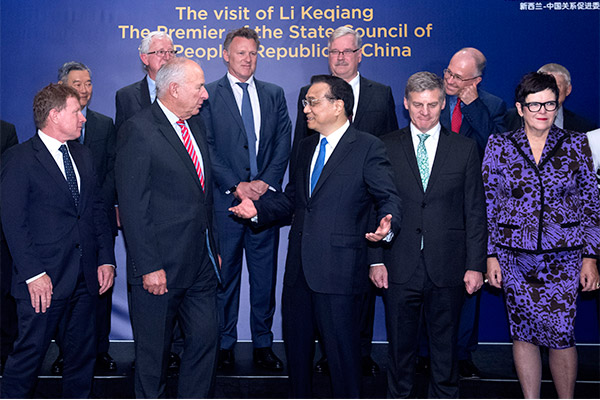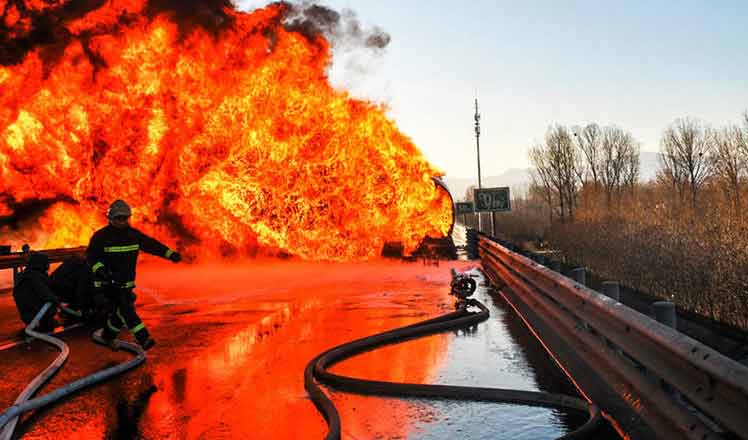Belt and Road beckon Canberra, Wellington
 |
|
Visiting Chinese Premier Li Keqiang and his New Zealand counterpart, Bill English, meet members of the New Zealand China Council in Auckland on March 28. Premier Li thanked the council members for their important role in promoting exchanges and cooperation between the two nations, and encouraged them to make greater contributions to bilateral friendship. [Photo/Xinhua] |
Premier Li Keqiang's visit to Australia and New Zealand from March 22 to 29 was the first by a Chinese premier in 11 years. Amid increasing geopolitical changes and challenges, his visit to the two countries showed China's commitment to the liberalization of trade and investment, as well as its efforts to march toward a regional free trade pact with other economies in the region.
His visit not only resulted in a series of concrete trade agreements such as facilitating quality supervision on Australian beef exported to China, but also paved way for negotiations to upgrade the free trade agreement between China and New Zealand. It released a clear signal to uphold the banner of free trade in the Asia-Pacific region.
Against the backdrop of relatively weak global economic growth and much challenged global governance, the Donald Trump administration in the United States has set an "exclusive" economic agenda of "America First" and "Make America Great Again". The supposed opposition to free trade and thus globalization by the world's biggest economy could alter its relationships with China, Australia and New Zealand, and change the way international institutions function.
Besides, the European Union is faced with uncertainties, especially on the political front. And the United Kingdom officially started the "Brexit" process on Wednesday, casting a shadow over the leadership and governance of the European Union.
On the other hand, Australia and New Zealand, like China, are trying to intensify reforms, which should motivate them to deepen their cooperation with China, a champion of freer, more inclusive trade and an important trade partner of Asia-Pacific economies.
The trade volume between China and Australia last year was $107.8 billion, almost triple that between Australia and the US. The China-Australia FTA, which came into effect in 2015-but will be fully functional in 2019-has taken bilateral trade and investment to new heights. As both sides begin to enjoy the dividends of the FTA, they should also welcome the idea of accelerating the construction of a free trade zone.
Inked in 2008, the China-New Zealand FTA was the first FTA deal China signed with a "Western" developed nation. It has led to an annual increase of at least 15 percent in bilateral trade, adding fresh momentum to their comprehensive strategic partnership. And China and New Zealand will start talks to upgrade their free trade agreement, which covers service trade, e-commerce and agricultural cooperation.
The two countries on Li's itinerary were also very important points on the 21st Century Maritime Silk Road, which is one part of the China-led Belt and Road Initiative. The focus of the Belt and Road Initiative, proposed by President Xi Jinping in 2013, is infrastructure-based connectivity, which happens to be in line with the domestic ambitions of Australia and New Zealand.
Canberra issued a plan in 2015 for developing North Australia in the next two decades, and last year it released a 15-year plan for improving infrastructure nationwide. Wellington's 2015 infrastructure plan, too, contains long-term goals such as attracting more investment and streamlining management and feasibility research.
In this context, the two countries have every reason to participate in the Belt and Road programs and work closely with China, which has a rich experience of executing infrastructure projects overseas.
So Li's visit is a timely boost for the countries' cooperation on the initiative.
The author is a researcher at the National Institute of International Strategy of the Chinese Academy of Social Sciences.




















